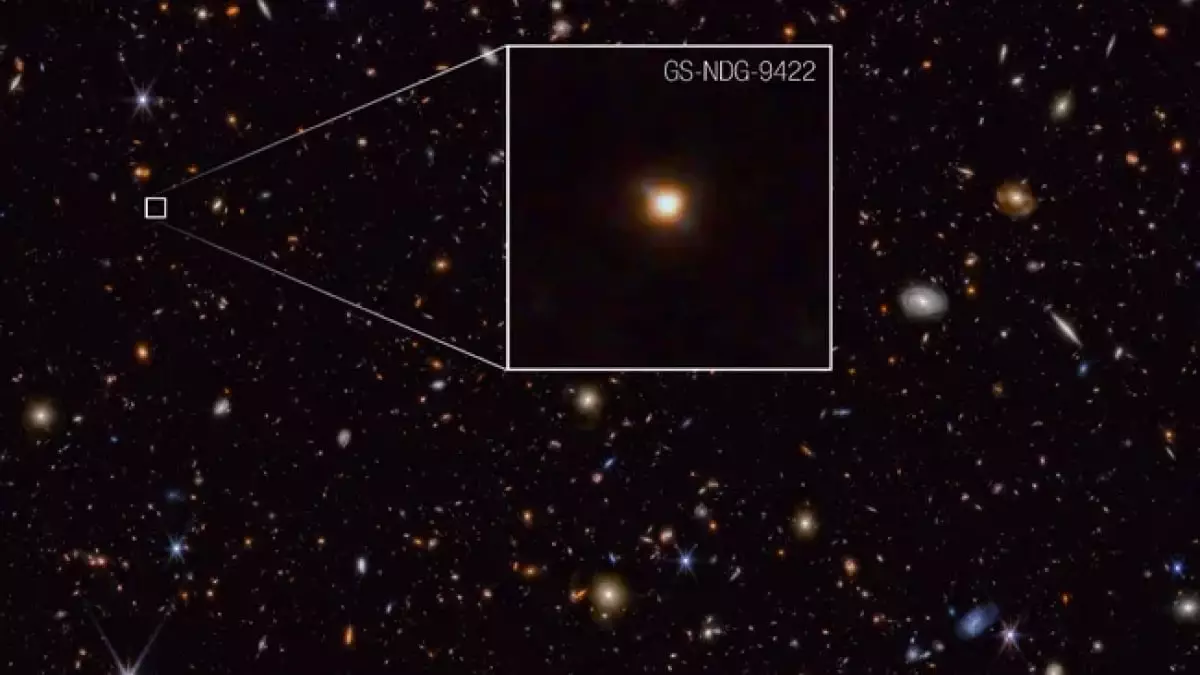The James Webb Space Telescope (JWST) has achieved another monumental breakthrough in the quest to unravel the mysteries of the universe. This time, the telescope has unearthed a distant galaxy dating back approximately one billion years after the Big Bang, heralding a new chapter in our comprehension of the cosmos. The galaxy in question serves as a significant artifact, illustrating the epoch when the first stars and galaxies started to coalesce in the fabric of space. This discovery unveils a crucial period in cosmic history, characterized by the delicate interplay between gas clouds and the nascent star systems.
One of the most astonishing revelations from this galaxy is the peculiar behavior of its gas clouds, which appear to overwhelm the brightness of its stars. Unlike the more familiar structure of modern galaxies, where stars typically dominate the luminous landscape, this galaxy presents a compelling anomaly. The intense brightness of its gas suggests a potential shift in our understanding of star formation and the role of gaseous material in the early universe. This phenomenon raises essential questions about how the environment influenced the formative processes of celestial bodies during this primordial phase.
In addition to its luminous gas clouds, the newly discovered galaxy is home to stars that exhibit remarkably high temperatures. These stellar bodies not only shine with extraordinary heat but also contain a more intricate assortment of heavier elements, which starkly contrasts with the primitive stars thought to have existed in the universe’s infancy. Such findings lead to pivotal questions regarding the transition from the universe’s initial, simpler hydrogen and helium stars to the rich and varied systems we observe today. The presence of these evolved stars indicates that the processes of nucleosynthesis and late-time cosmic evolution may have occurred much earlier than historically posited.
Implications for Cosmological Research
The significance of this discovery extends beyond the specifics of this single galaxy. As astronomers analyze more distant galaxies with the advanced capabilities of the JWST, they expect to uncover a myriad of similar structures that will challenge and refine existing cosmological models. This burgeoning trove of information promises to reshape our understanding of the formation and evolution of the universe, particularly how the chemical and physical conditions played a role in the genesis of more complex structures.
As research initiatives continuously evolve and expand, the prospects of astronomical inquiry are more promising than ever. The James Webb Space Telescope not only provides a powerful lens into the cosmic past but also fosters an environment where scientific knowledge can flourish. The exploration of distant galaxies, like the one recently observed, represents an exciting frontier that will enable us to piece together the grand cosmic puzzle. Each new finding propels the field into a deeper understanding of how galaxies and stars emerged from the early universe’s chaos, driving humanity’s insatiable curiosity about our place in the cosmos.

Leave a Reply